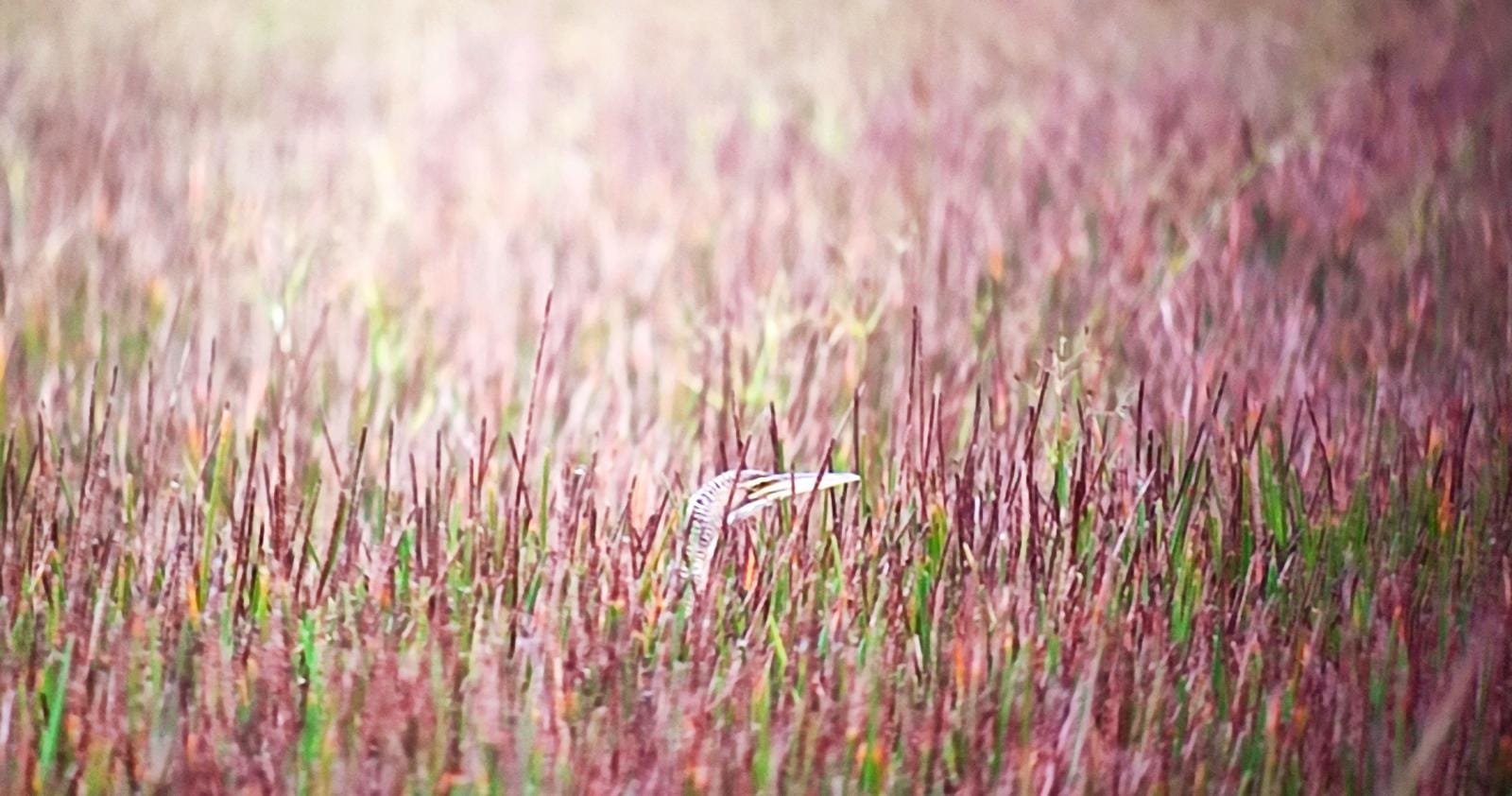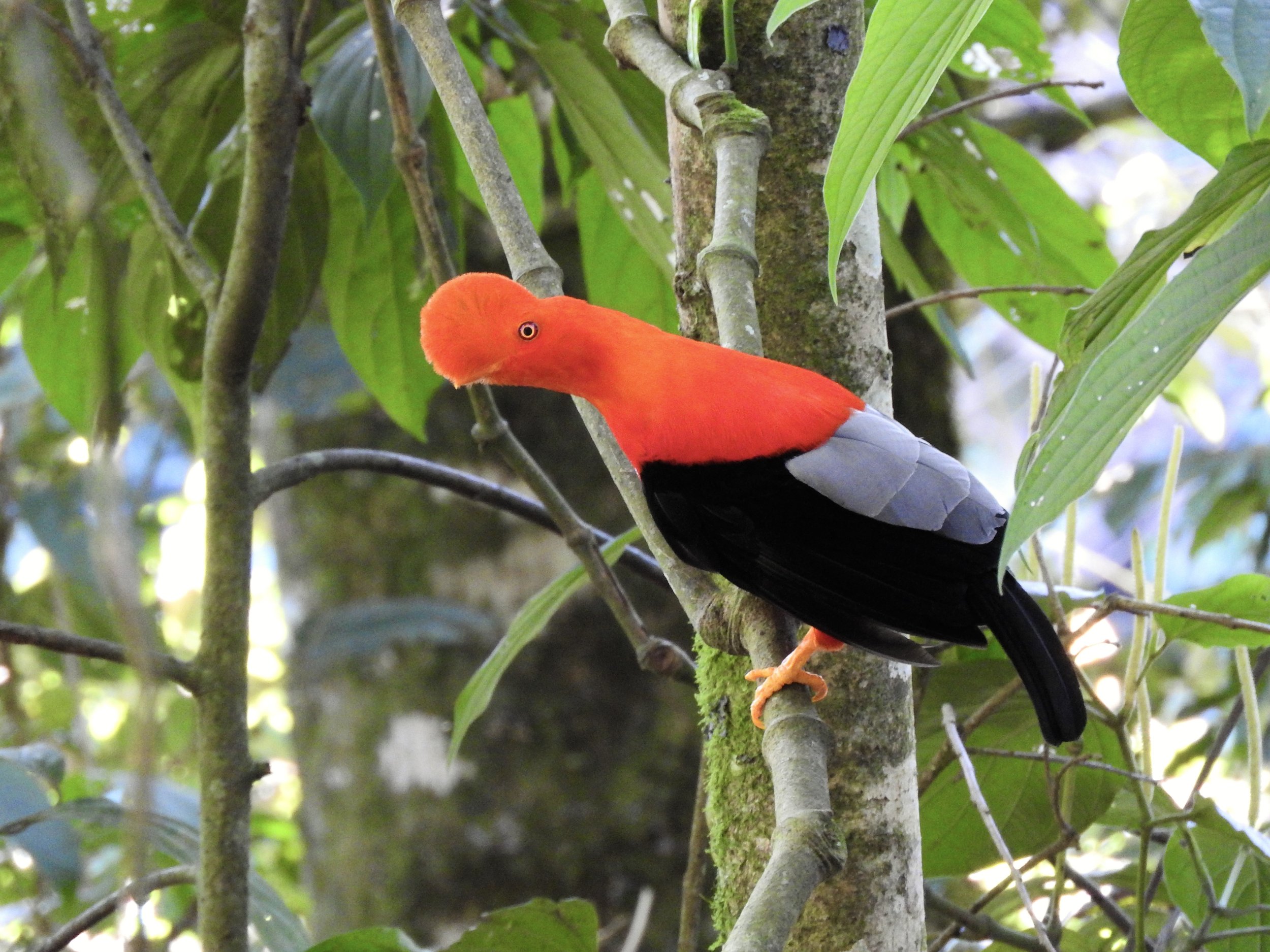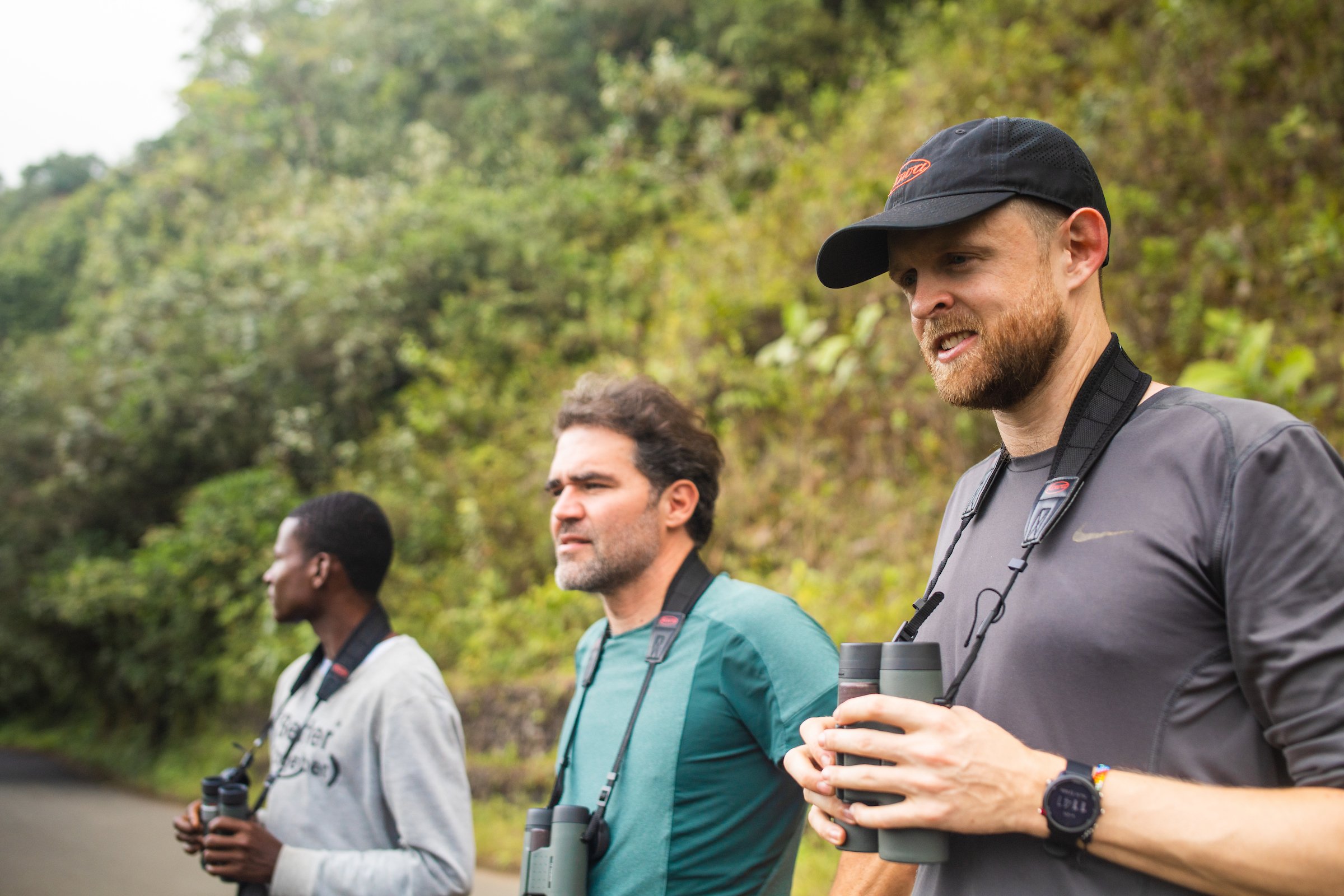My Top 10 Birds of 2021: Part 1
Summer and Scarlet Tanager, Bogota. Want to know how these relatively common species made the Top 10? Read on…
I spotted over 1,000 bird species in 2021. Narrowing down all those species into a Top 10 list proved extremely difficult, but I managed it eventually.
So here’s Part 1 of my Top 10 birds of 2021:
10. Ruddy Woodcreeper
Woodcreepers don’t make a lot of ‘Best Of’ lists,’ and that’s probably fair enough; they’re rarely that brightly colored or showy, and the difference between many species is down to extreme subtleties of plumage or vocalization. However, I happen to quite like woodcreepers - they’re a bit of a challenge to ID and quite pretty once you get a good look at them. There are also a few of them that like to follow ants.
The Ruddy Woodcreeper is one such ant-following woodcreeper. Unfortunately, this can make it one of the hardest woodcreepers to spot. Why? Because you typically need to find an antswarm to see one. To illustrate how tricky this bird can be, my highly experienced co-host Diego had never seen one before.
I have a bit of a personal connection to this woodcreeper. I saw it at my first-ever antswarm in the Sierra Nevada de Santa Marta, and I was also the first person to register it in the Colombian department of Arauca (at least on eBird). So to get it twice this year, in two different countries, was a real treat.
The first views were truly mind-blowing: two or three individuals feeding at arm’s length on the ground at a giant antswarm in the Ejido Nuevo Becal in Calakmul, Mexico, during a work trip. The second was extra special: another few individuals at an antswarm in Curi Cancha Reserve in Costa Rica. Why was this sighting extra special? Because I shared it with Diego, who finally got one of his nemesis birds - sharing a great bird with friends is always better.
Ruddy Woodcreeper, photographed on assignment for the FSC (Forest Stewardship Council) with WhereNext at the Ejido Nuevo Becal, Campeche, Mexico
9. Snow Bunting
At Christmas, I was back in the UK for the first time in over two years. With Covid cases skyrocketing, I kept the visit very low-key and family-oriented. Thankfully for me, spending time with my Mum and Dad means lots of birding. We took a few day trips out to the North Wales coast, the Wirral Peninsula, and local areas around Shropshire. As a result, I managed to rack up a very respectable 104 birds in the UK in just a couple of weeks.
The highlight of the visit was a bird that my Dad had searched for in the UK to no avail, the Snow Bunting. We've both seen this handsome little bunting in full black-and-white breeding plumage in the parking lot of the Blue Lagoon in Iceland. Still, it's an altogether scarcer species in England, arriving along scattered parts of the coastline during the winter.
Early one morning, we stopped at Hoylake on the Wirral to scan the low tide mudflats for waders. As we walked across the grass down to the promenade, a bird took off just a few feet from us with distinctive bold black-and-white wing patches. We both instinctively cried out, "Snow Bunting!" Thankfully, the bird stuck around for ages, and we watched it foraging on the beach, seemingly unconcerned by the passing joggers and dog walkers. It's a 2021 highlight not just for its delicate beauty but because it was a much-desired UK lifer for my Dad and a genuinely unexpected self-found sighting.
8. Hooded Antpitta
Perhaps it’s unfair to call such a rare and elusive little bird a “nemesis” species, but Hooded Antpitta is one that had eluded me for several years. Eventually, I decided to do something about it and booked a flight from Bogota to Pereira in the Coffee Region for the weekend. My friend Carlos and I hopped on a bus on a quest for two rarities: the antpitta and Mountain Tapir.
We got excellent views of the tapir early on. Carlos heard a branch crack in the forest just off the road, and we went to investigate, finding a huge female tapir calmly feeding just a few meters from us. Unfortunately, the antpitta didn’t play ball that day. Carlos had to leave, but I stayed overnight, so I had another shot at dawn.
At first light, I walked the same stretch of road when I suddenly heard a high-pitched whistle in the undergrowth. I quietly made my way through the forest to the source of the whistle and sat down in the leaf litter, trying to remain as inconspicuous as possible. The whistling sounded like it was just a few meters away but, try as I might, I couldn’t locate the bird.
After a few minutes, I suddenly picked up the slightest movement up ahead, and there it was: the delightful little antpitta had been sitting right in front of me the entire time, just slightly higher up than I had anticipated. So I spent at least fifteen minutes enjoying crippling views of this rare and little-known bird. Sadly my photos don’t do the sighting justice; I couldn’t seem to get a good focus in the low understory light. But no matter: nemesis bird seen, and what a sighting!
What a delightful little ball of fluff! Hooded Antpitta in the Colombian Central Andes
7. Pinnated Bittern
I’ve always liked bitterns. Eurasian Bittern was one of my first “mega” birds in the UK when I was about ten years old. Of the larger Botaurus bitterns, only one species is found where I live in Colombia, the Pinnated (or South American) Bittern, and it’s scarce and little-known.
During my December trip to Costa Rica, I visited an excellent site for this elusive species: the Medio Queso Wetlands in Alajuela province. However, when we arrived, our guide told me that it was a challenging time of year to spot the bitterns, with the water levels still high and the birds hiding out in the deep parts of the reedbeds. Undeterred, I obsessively scanned the reeds throughout the boat trip, and I eventually struck gold!
It was a classic bittern view: a skinny, streaky neck poked almost vertically out of the reeds. It was so well camouflaged that I barely noticed it. But it was unmistakably a Pinnated Bittern. It periodically dipped its head down out of sight before popping up a few meters further on. Eventually, it took flight and treated us all to beautiful views of its long two-toned wings.
This bittern makes my 2021 list for two reasons. The first I’ve already talked about: I love bitterns! The second has more to do with ‘birder pride’ - my companions on the Costa Rica trip were some genuinely exceptional birders, so it was a great personal birding moment to have managed to pick out such a tricky bird. Sometimes it’s as much about the process as the bird!
“My” Pinnated Bittern from the Medio Queso Wetlands in Costa Rica. Not an easy bird to spot! (Photo: Jonathan Meyrav)
6. A Tree Full of Migrants
Technically this one isn’t a single species but about half a dozen, but I couldn’t leave out one of my most cherished birding memories of 2021.
I live on a pretty nondescript street in Bogota, Colombia. It’s primarily apartments, and there’s a theatre, dance school, woodworking workshop, and hardware store. There are a couple of trees, and I don’t see a lot of birds from my little balcony. At least, I didn’t until early November 2021.
The small tree directly opposite the balcony produces small berries that the sparrows and thrushes seem to like. Unfortunately, for the past couple of years, it came into fruit just a fraction too early for the wave of migrant birds that pass through Bogota. Then, in 2020, it fruited in September and was stripped bare by Great Thrushes within a week. I usually see a Summer Tanager or two most years, but that’s about it.
In 2021, however, the tree was laden with berries at precisely the right time, and I was hopeful that I might get a migrant or two. But, it was so much better than that! One morning I went out onto the balcony early to be greeted by a tree full of migrant birds: Summer and Scarlet Tanagers, a handful of Swainson’s Thrushes, Red-eyed Vireos, Canada Warblers, and even a Yellow-billed Cuckoo.
It felt like my own private birding show and was extra special because it was happening in “my” little tree. It was a real moment of birding magic. And there honestly weren’t many birds that made me happier in all of 2021. So those migrants come in at No. 6.
One of the Red-eyed Vireos that visited “my” tree in early November












